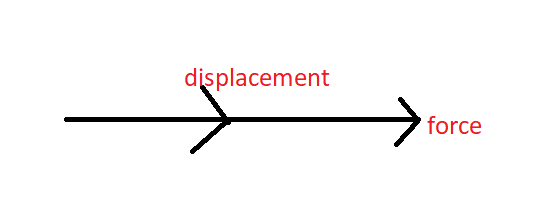Question
Question: Explain positive, negative and zero work. Give one example of each....
Explain positive, negative and zero work. Give one example of each.
Solution
Hint: Write formula of work W=F⋅r. Learn dot product of two forces. For positive work, W should be positive so for this find an angle between force and displacement.
Dot product of two component A and B
A⋅B=ABcosθ
Where θ is the angle between two vectors.
F⋅r=Frcosθ
Find θ for positive W, negative W and zero W.
Complete step by step answer:
The work done by a force on a particle during a displacement is given as
W=F⋅r
Here, W = work
F= force
r= displacement
Positive work done – The work done is said to be positive when force and displacement are in the same direction.
θ=0∘F⋅r=FrcosθF⋅r=Frcos0∘F⋅r=FrW=F⋅r=Fr

Hence, work is positive.
Zero work – the work done is said to be zero when force and displacement are perpendicular to each other.
θ=90∘F⋅r=FrcosθF⋅r=Frcos90∘F⋅r=0W=F⋅r=0
Hence, work is zero

Negative work done – The work done is said to be negative when force and displacement are in opposite directions.

θ=180∘F⋅r=FrcosθF⋅r=Frcos180∘F⋅r=−FrW=F⋅r=−Fr
Hence, work is negative.
Note: Work done by friction is always zero because friction force and displacement act in opposite directions. When a spring travels from A to B and from B back to A then work done during the return journey is negative of the work during the onwards journey and the net work done by the spring is zero.
